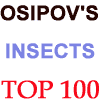Catocala johnsoniana
Catocala johnsoniana
kah-TOCK-uh-lahMjon-SOHN-ee-an-uh
Brower, 1976

Catocala johnsoniana
(male). Miracle Hot Springs, 2320'
Kern County, CA Jul 4 1989. Kelly Richers, collector, at uv light.
This site has been created by
Bill Oehlke at oehlkew@islandtelecom.com
Comments, suggestions and/or additional information are welcomed by Bill.
| TAXONOMY:
Superfamily: Noctuoidea
Family: Noctuidae
Group: Noctuinina
Subfamily: Catocalinae
Genus: Catocala, Schrank, 1802
| |
MIDI MUSIC
"Moon River"
copyright C. Odenkirk
MIDI CITYON.OFF
<bgsound src="moon.mid" LOOP=FOREVER>
|
DISTRIBUTION:
Johnson's Underwing,
Catocala johnsoniana
(wingspan: mm), flies in
California: Butte, Colusa, Kern, Lake, Los
Angeles, Madera, Solano, Tuolumne and Yolo counties.
"Catocala johnsoniana occurs mostly in the northern,
eastern and southern foothills edging the Central Valley of California, mostly
at slightly lower elevations than the other five species in the delilah complex found in California." David Hawks.

Catocala johnsoniana, California, courtesy of David Hawks, as per link at bottom of page.
This species has a conspicuous basal dash, an open subreniform spot, and longer teeth in the pmline as compared to
C. californiensis.
"The hindwing inner black band is relatively short
and thick, while the postmedial yellow band is proportionately wider than in most
specimens of all other species in the C. delilah complex." David Hawks.
FLIGHT TIMES AND PREFERRED FOOD PLANTS:
It is expected that larvae prefer Quercus douglasii Hook. & Arn.
Catocala johnsoniana are usually on the wing from late May to early July.
ECLOSION:
Adults eclose from pupae in leaf litter at soil surface.
SCENTING AND MATING:
Catocala johnsoniana females
emit an airbourne pheromone and males use their antennae to track the
scent plume.
EGGS, CATERPILLARS, COCOONS AND PUPAE:
Eggs are deposited on
tree bark in the fall and hatch the following spring.
Larval Food Plants
Listed below are primary food plant(s) and alternate food plants.
It is hoped that this alphabetical listing followed by the common
name of the foodplant will prove useful. The list is not exhaustive,
although some species seem very host specific.
Experimenting with closely related foodplants is worthwhile.
Quercus douglasii .......
|
Blue Oak
|
This page is brought to you by Bill Oehlke and the
WLSS. Pages are on space rented from Bizland. If you would like to become a "Patron of the Sphingidae/Catocala Sites",
contact Bill.
Please send sightings/images to Bill. I will do my best to respond to requests for identification help.
Enjoy one of nature's wonderments: Live Saturniidae (Giant Silkmoth) cocoons.

|

To show appreciation for this site, click on the flashing
butterfly to the left, a link
to many worldwide insect sites. |
Return to Canadian Index
Return to Main Index
Visit Catocala delilah Species Complex; Author: David Hawks.
Visit California Catocala
immatures



